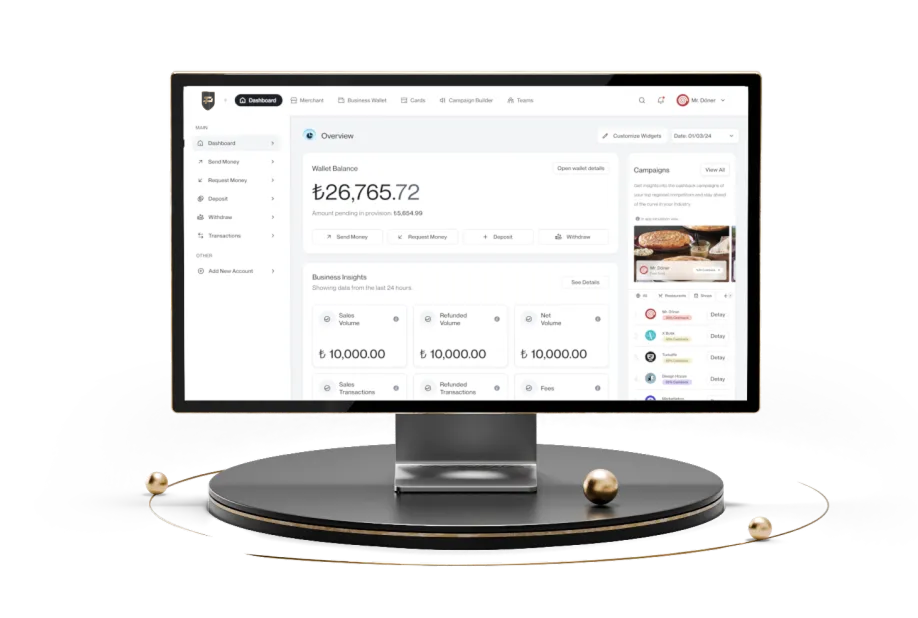How Do Subscription-Based Payment Systems Work?
The subscription model, widely used in various industries, from digital platforms to e-commerce, software services, and even the food sector, provides financial stability for businesses while offering customers regular and convenient access. So, how do subscription systems work, in which industries are they used, and what advantages do they offer businesses? Find answers to all your questions about the subscription model on Papel Blog!
What Is the Subscription Model?
A subscription is a business model where customers make regular payments to access a product or service at specific intervals. In this model, customers pay weekly, monthly, or annually and receive the corresponding product or service in return. Having started in the 17th century with book and publication distribution, the subscription model is now applied across various industries, from digital content platforms to the food sector.
This model offers businesses benefits such as sustainable revenue flow and increased customer loyalty while providing customers regular access to desired products or services. Due to these advantages, the subscription model is preferred in the e-commerce sector.
How Does the Subscription Model Work?
The subscription model, used for selling products and services in both digital and physical environments, operates as follows:
Selecting a Subscription Plan
Businesses offer different subscription plans to customers, who then choose the one that best suits them. These plans can be weekly, monthly, or annual.
Registration and Payment
Based on the selected plan, the customer enters their personal and payment information into the system to initiate the subscription process. Payments are usually automatically deducted from the customer's account at predetermined intervals.
Delivery of the Product or Service
The customer gains regular access to their chosen product or service throughout the subscription period. For example, in digital subscriptions like Netflix, Spotify, or YouTube, customers have continuous access to content, whereas in physical product subscriptions, such as magazines, products are delivered at specific intervals.
Subscription Management
Customers can cancel, modify, or pause their subscriptions at any time. This flexibility enhances customer satisfaction and encourages long-term loyalty.
Types of Subscription Models
Businesses offer customers regular access to a specific product or service in exchange for periodic payments. Subscription models vary across different industries and are typically categorized as follows:
Auto-Renewable Subscriptions
Auto-renewable subscriptions are based on the automatic periodic delivery of products that customers regularly consume. Examples include personal care products, household cleaning supplies, and food items. This model is advantageous as it eliminates the need for customers to reorder essential products repeatedly.
Access Subscriptions
Access subscriptions provide continuous access to a particular service or content. Examples include digital content platforms, SaaS (Software as a Service) products, and educational platforms.
Discovery Subscriptions
Discovery subscriptions introduce customers to new products in each subscription period, allowing them to explore different offerings. Examples include monthly surprise boxes, gourmet food packages, and book clubs.
Hybrid Subscriptions
In hybrid subscription models, businesses offer both products and services. For instance, a gym membership may include periodic fitness equipment delivery and access to online workout programs.
In Which Industries Is the Subscription Model Used?
The subscription model is widely used in various industries. Some of the key sectors implementing this system include:
Publishing: Print media, such as magazines and newspapers, have utilized subscription models since their inception.
E-Commerce: Online stores offer subscription services for specific products, ensuring regular deliveries. Examples include personal care products, hygiene supplies, cleaning materials, and food items.
Digital Media & Entertainment: Platforms like Netflix and Spotify use the subscription model to provide continuous content access to their users.
Software & Technology: Subscription-based services like Adobe Creative Cloud and Microsoft 365 allow users to access software solutions
regularly.
Health & Fitness: Gyms, fitness programs, and diet plans operate under the subscription model, offering customers structured wellness plans.
Food & Beverage: Meal subscriptions, diet plans, and meal kits provide customers with regularly delivered food services.
Fashion & Apparel: Some fashion and clothing brands offer products through subscription-based delivery models.
Advantages of Subscription-Based Payment Systems
Subscription-based payment systems offer advantages for both businesses and customers.
Advantages for Businesses
Steady and Predictable Revenue Stream: The subscription model ensures regular income, making financial planning and budgeting more straightforward and reliable.
Customer Loyalty: Since customers receive regular service or product deliveries, their engagement and likelihood of repeat purchases increase.
Improved Cash Flow: Subscription models stabilize cash flow, allowing businesses to make healthier investment decisions.
Customer Behavior Analysis: Subscription models allow businesses to collect data on customer preferences and behaviors, which can be used to improve products/services and optimize marketing strategies.
Advantages for Customers
Convenience and Time-Saving: Subscription models eliminate the need for repeated orders by offering automatically renewed services or products, saving customers valuable time.
Flexibility: Customers can customize, pause, or cancel their subscriptions according to their needs, enhancing overall customer satisfaction.
Regular Access to Products and Services: Particularly beneficial for frequently used products, the subscription model ensures uninterrupted access.
Simplified Payment Process: With automatic payments, customers no longer have to manually process payments, reducing late payment risks.
Do the advantages ever end? Not if you're with Papel! You can earn rewards while making your subscription payments with Papel. Sign up today and take advantage of the best cashback offers tailored for you.

Subscription Payment Models
Subscription payment models allow businesses to collect regular payments (e.g., weekly, monthly, or yearly) from customers in exchange for continued access to products or services. These models are typically classified as follows:
Recurring Payments
Recurring payments involve automated periodic transactions (e.g., monthly or yearly). Businesses benefit from steady cash flow, operational efficiency, and increased customer retention, while customers enjoy ease of payment and uninterrupted service.
Usage-Based Payments
In usage-based payment models, customers pay based on how much they use a product or service. This pricing strategy is commonly used in cloud computing, software solutions, and infrastructure services. For instance, some software services operate on a "pay-as-you-go" model, meaning customers are billed according to usage. While this model provides cost efficiency and flexibility, potential downsides include difficulty in cost control and unpredictable expenses.
What Should Businesses Consider When Choosing Subscription Systems?
Choosing the right subscription system is crucial for ensuring operational efficiency and customer satisfaction. Here are some key factors businesses should consider:
Identifying Business Needs
Determine which subscription model fits your business and what features are essential for your operations.
Integration Capability
Your chosen system should seamlessly integrate with your existing ERP, CRM, and accounting software to ensure smooth data flow and operational efficiency.
Automated Billing and Payment Tracking
A subscription system must support automatic billing and payment tracking to reduce manual errors and streamline financial processes.
User-Friendly Interface
A system with an easy-to-use interface benefits employees and customers, improving user experience and reducing training costs.
Scalability
Choose a system that can handle increased demand as your business grows, reducing the need for future upgrades.
Security
Ensure the system complies with security protocols to protect customer data and payment information.
Cost
Evaluate the system's installation, maintenance, and operational costs to ensure financial sustainability.
Sources: 1.

